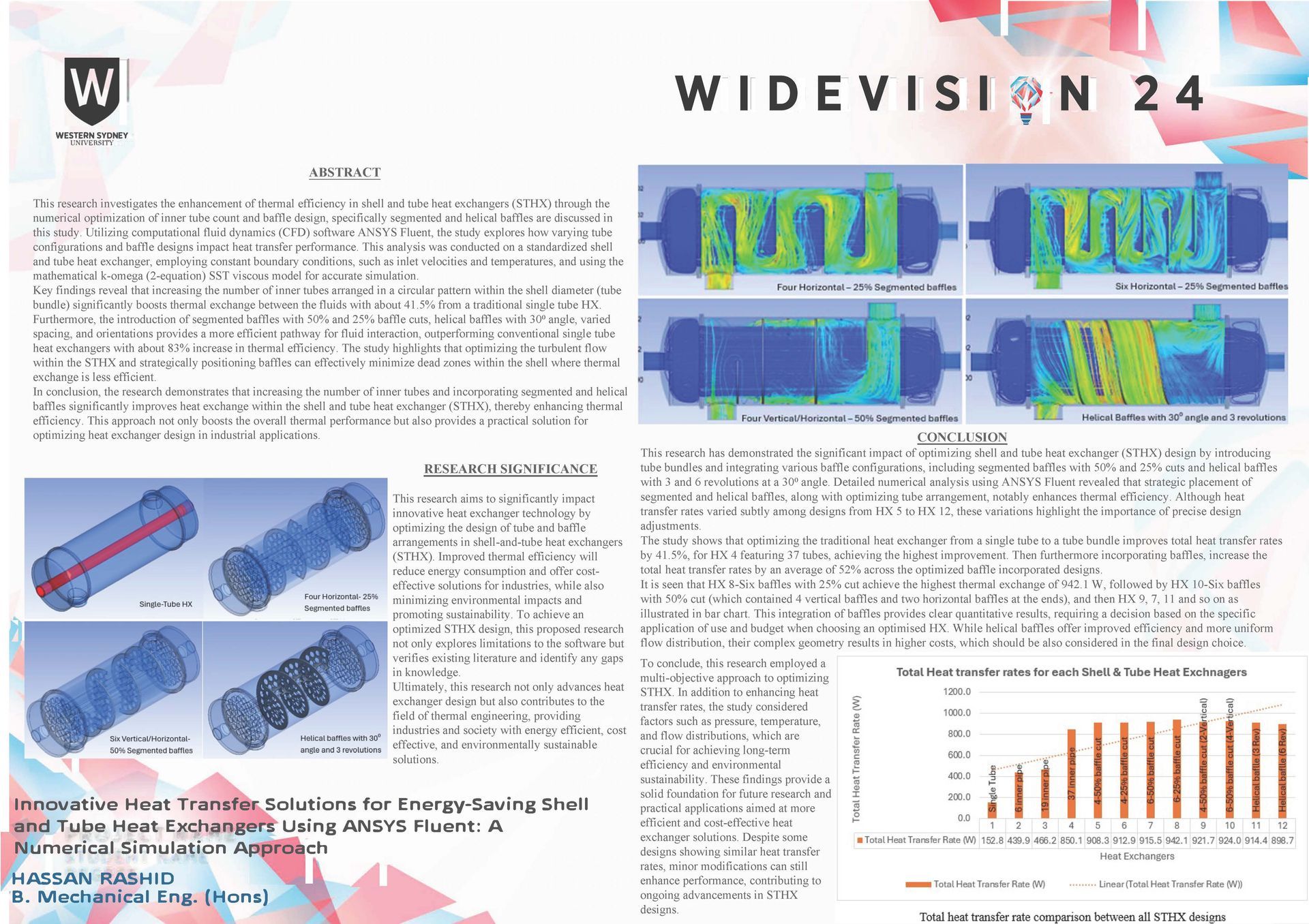Hassan Rashid
Innovative Heat Transfer Solutions for Energy-Saving Shell and Tube Heat Exchangers Using ANSYS Fluent: A Numerical Simulation Approach
PROJECT
This research focuses on optimizing the performance of shell and tube heat exchangers, commonly used in industries for efficient heat transfer between water and other fluids. With growing concerns about energy consumption and industrial efficiency, there is increasing demand for improved heat exchanger designs that reduce energy waste and operational costs.
Traditional shell and tube heat exchangers, while effective, often suffer from inefficiencies due to their simple geometries and lack of optimization. These inefficiencies result in higher energy consumption and increased operational costs. The goal of this research is to address these limitations by enhancing the design to improve heat transfer and energy efficiency.
Leveraging ANSYS Fluent, a numerical simulation software, this project explores innovative design modifications, specifically focusing on increasing the inner tube count and integrating segmented and helical baffles. Segmented baffles were investigated with 50% and 25% baffle cuts, while helical baffles were analysed at a 30-degree angle with 3 and 6 revolutions. These changes aim to improve heat transfer rates, reduce pressure drops, and optimize fluid flow patterns within the exchanger.
Simulation results show a significant improvement in heat transfer efficiency, with up to a 40% reduction in energy consumption compared to a traditional single-tube heat exchanger design. These optimized configurations offer practical solutions for industries looking to enhance their thermal systems while reducing both costs and environmental impact.
The optimized shell and tube heat exchanger designs developed in this project have the potential to revolutionize energy-intensive industries such as power generation, chemical processing, and HVAC systems. By improving efficiency, companies can achieve energy savings, lower operational costs, and support more sustainable industrial practices.

With respect for Aboriginal cultural protocol and out of recognition that its campuses occupy their traditional lands, Western Sydney University acknowledges the Darug, Eora, Dharawal (also referred to as Tharawal) and Wiradjuri peoples and thanks them for their support of its work in their lands in Greater Western Sydney and beyond.
Acknowledgement of Country
Western Sydney University Copyright © 2004-2024 | ABN 53 014 069 881 | CRICOS Provider No: 00917K | TEQSA Provider ID: PRV12061 (Australian University)

